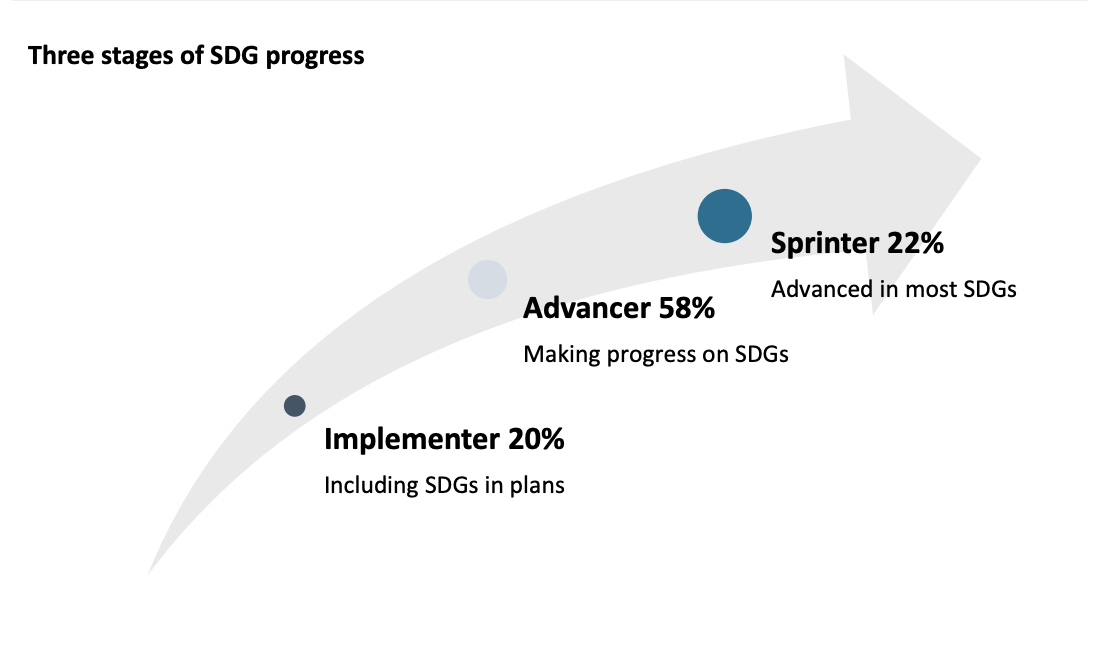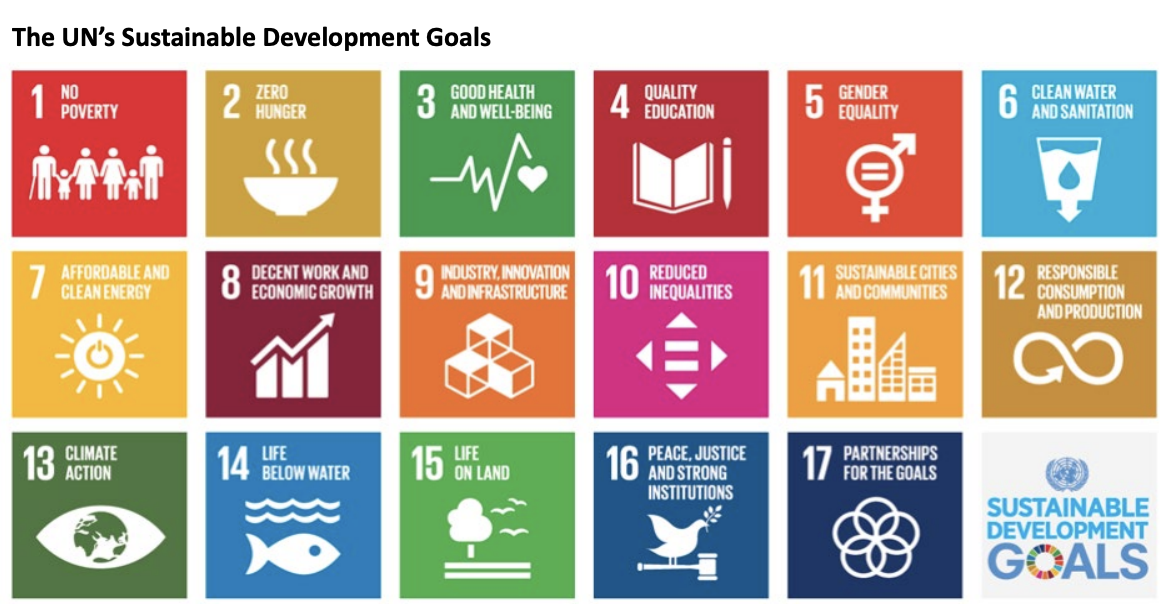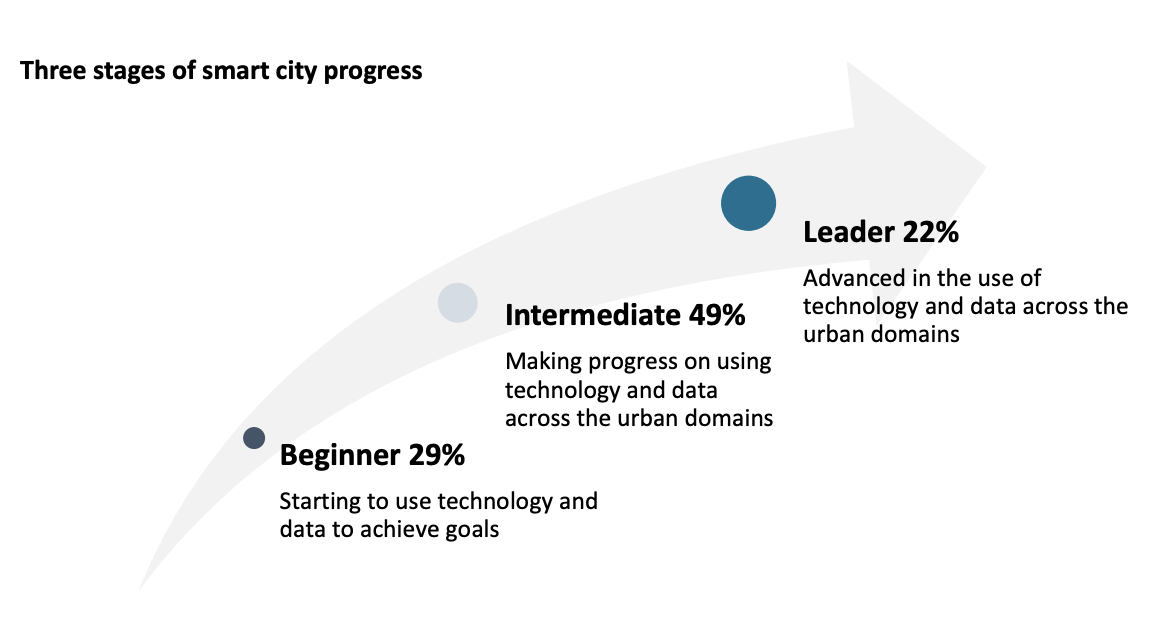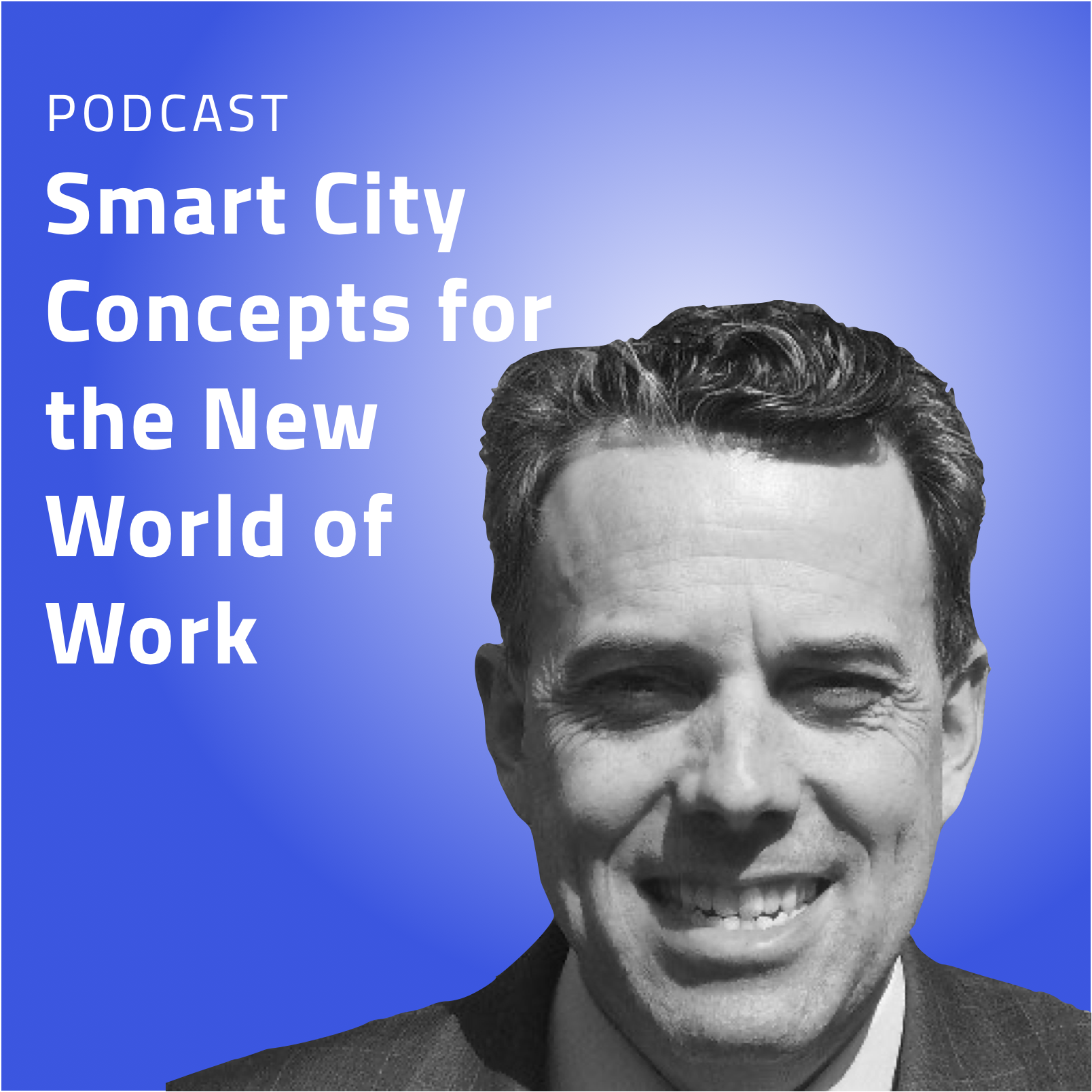KEY TAKEAWAYS
- The pandemic has been a catalyst for remarkable technological, business and social change, which will continue after the health crisis ends. With the expectations of citizens rising, the most successful cities will be those that are advanced in using smart technology and data and deploy them to drive the Sustainable Development Goals (SDGs).
- With businesses gearing up for the Fourth Industrial Revolution, or Industry 4.0, these new cities – ‘Cities 4.0’ – will be far along in their digital transformation, fully sustainable and skilled in the new ways of doing business.
- As part of the research, 167 cities were surveyed and benchmarked, a scoring index created, city data gathered, interviews with urban leaders and experts conducted, and a multi-disciplinary advisory board established.
- Cities were grouped according to their stage of sustainable development progress, with a classification of ‘implementer’, ‘advancer’ or ‘sprinter’ depending on how they scored across criteria relating to the SDGs.
- Garnering support, both internally and externally, as well as benchmarking against other cities, has proven critical to the success of smart city solutions. For example, of those cities leading the pack (the ‘sprinters’), 78% have a department that leads SDG efforts, vs. only 46% of other cities and none of the ‘implementers’.
- European cities have made the most progress, with an average of 77% making considerable headway on each of the SDGs. With increasing temperatures and sea levels threatening their citizens and economies, African cities are moving most aggressively on climate action.
- It’s crucial to look beyond the monetary benefits: smart cities create new business opportunities, fill talent gaps, improve public health, reduce crime, boost productivity and address income inequality.
As the pandemic subsided, a groundbreaking study was conducted by a distinguished coalition of organizations that specialize in smart city solutions and support. NTT is proud to be amongst the sponsors and research advisors of this ESI ThoughtLab study, along with Microsoft, Intel, Honeywell, Cisco and many others. The goal was to provide an evidence-based roadmap to urban resilience and sustainability and to open a valuable dialogue on the future of cities among government, business and academic leaders.
Rebuilding with purpose
In the pandemic era, ensuring a healthy, safe and prosperous future for citizens has been a burning imperative for city leaders. But with city budgets under pressure, it also has been their biggest challenge. Covid-19 has served as a stress test for cities, as businesses and services were shut down and medical facilities stretched to their limit. It also exposed weaknesses in digital infrastructure and resilience as disruptions emerged unexpectedly with far-reaching aftershocks. Simultaneously, cities are facing mounting pressures to address vulnerabilities related to cybersecurity and climate change.
Yet the pandemic has also been a catalyst for change. It is accelerating the reliance on technology, smart innovation and e-commerce, while transforming citizen behaviors and expectations, and redefining how people work and live. It is also underscoring the role of collaboration among business, government, and academia to achieve social, environmental and economic goals.
To succeed in the post-Covid world, urban leaders need access to evidence-based analysis showing the innovative technologies, solutions, and business models that will work best, particularly when the next disruption hits.
Sustainable development
To explore how cities are achieving their social, environmental and economic goals – and the solutions that work best – a five-pronged research program was conducted:
- 167 cities were surveyed and benchmarked. We analyzed their use of smart technologies and data analytics across all parts of their urban ecosystem, as well as in-depth data on their city investments, outcomes and returns.
- A City Sustainability Progress Index was created. We used the survey data to develop a scoring methodology, allowing us to categorize cities by their progress against the UN’s 17 Sustainable Development Goals (SDGs).
- City data from trusted sources was gathered. We collected data on city services and quality of life from the World Bank, Numbeo, IESE, and other respected sources. This data was integrated and correlated with our survey data.
- Interviews with urban leaders and experts were conducted. To identify best practices and provide case studies, we had in-depth discussions with government decision-makers and business leaders in smart cities around the world.
- A multi-disciplinary advisory board was established. Our advisory board of city leaders, corporate executives, and academic experts provided valuable guidance and insights to ensure the acuity of our analysis.
The cities – located in North America, Latin America, Europe, MENA, Africa and Asia – range in population from 80,000 to nearly 27 million, and vary by level of economic development. The split between emerging markets and developed countries was roughly even, with 53% and 47% of cities respectively.
Cities were grouped according to their stage of sustainable development progress, with a classification of ‘implementer’, ‘advancer’ or ‘sprinter’ depending on how they scored across criteria relating to the SDGs.

Figure: How smart cities are progressing towards the UN’s Sustainable Development Goals
Cities were scored on the number of SDGs a city has included in its plans, the progress a city has made on each of the SDGs, and the steps a city is taking. For example, whether the city is:
- Regularly monitoring SDG efforts,
- Assessing areas where the city lags,
- Designating a department to implement SDGs,
- Gathering high-level support for its SDG program,
- Conducting a voluntary local review (VLR),
- Enjoying a reputation as a leader in SDG adoption.

Figure: The UN’s 17 Sustainable Development Goals
Smart thinking
The study also classified cities by their progress and maturity in applying smart solutions. Each city was categorized into either beginners, intermediates or leaders, depending on their:
- Level of digitization across the urban domains,
- Competence in using data and analytics,
- Progress on fostering citizen engagement.
An additional filter was applied for leaders. To be classified as a leader, a city had to self-identify as either advanced or very advanced in its implementation of smart city initiatives.

Figure: Classification of cities in the study according to their maturity in applying smart solutions
When smart and sustainable meet: Cities 4.0
To analyze the impact of smart city solutions on sustainability, the study identified a subset of SDG sprinters that also lead in using advanced technology and data analytics.
These will be the most successful cities as businesses gear up for the Fourth Industrial Revolution, otherwise known as Industry 4.0, and as the expectations of citizens rise. These ‘Cities 4.0’ – spanning Boston to Birmingham and Barcelona to Baltimore, as well as those you’d expect to see on the list such as London, New York and Paris – are on their way to being mature in their digital transformation, fully sustainable, and skilled in the new ways of doing business.
What sets Cities 4.0 apart? They are further ahead in smart city initiatives, with on average 14 smart city projects deployed vs. an average of 7 for others.
They have superior infrastructure, with better public transportation, roads, parks, healthcare, and digital connectivity.
And they have made the greatest progress on nearly all SDGs, with an average of 86% of Cities 4.0 (vs. 62% of all cities) having made progress across all SDGs.
Other key findings and recommendations
The UN categorizes the SDGs into five Ps: people, planet, prosperity, peace and partnerships. Most cities include SDGs under each of these Ps in their urban development plans.
Cities are doing the most with SDGs relating to people: 91% include no poverty, 89% include good health and wellbeing, and 86% include quality education in their plans.
Cities are also focusing on prosperity, with 86% including decent work and economic growth in their plans, and 78% incorporating sustainable cities and communities. The SDGs around planet, peace, and partnerships are included slightly less often.

Figure: Number of cities featuring the SDGs in their plans, broken down into the ‘5 Ps’ of people, planet, prosperity, peace and partnerships
European cities have made the most progress, with an average of 77% making considerable headway on each of the SDGs.
North American cities are close behind with 71%. Africa has made the least progress, with an average of just 33%, followed by Latin America with 47% and Asia with 58%.
Every city in MENA and 87% of those in Latin America have made considerable progress on poverty. European and North American cities are well ahead on good health, decent work, industry and innovation and sustainable cities.
With increasing temperatures and sea levels threatening their citizens and economies, African cities are moving most aggressively on climate action.
Of course, many of these differences are related to budgetary capacity, with cities in advanced economies having greater resources to devote to the SDGs.
Five steps to ensure success
Garnering support, both internally and externally, as well as benchmarking against other cities has proven critical to the success of smart city solutions.
- Monitor progress: 94% regularly monitor SDG progress vs. 70% of other cities. Only 12% of implementers track progress.
- Select a department to lead: 78% have a department that leads SDG efforts vs. only 46% of other cities and none of the implementers.
- Conduct a voluntary local review: 58% have done voluntary local reviews of SDG progress vs. only 40% of other cities.
- Gain wide support: 86% enjoy wide support across city government, including high levels, vs. 57% of other cities.
- Assess results against peers: 72% measure SDG progress against peers to identify strengths and weaknesses vs. 40% of other cities.
As Aram Chaparyan, City Manager of Torrance in California, notes “Sustainability, environmental stewardship, fiscal responsiveness, homelessness, affordability in housing, social equity and injustice – those issues will carry on into the next 10 years. We have to plan and adapt to ongoing changes.” The time to embrace this evolution in urban development is now.
Benefits for all
Urban centers will need to become Smart Cities 4.0 to prosper and grow after the pandemic. Even before the health emergency, cities were evolving into smarter cities, learning from mistakes made early in their digital journey.
The pandemic has exposed the need for cities to go beyond what some have categorized as Cities 3.0 to become Cities 4.0 in order to achieve their social, environmental, and economic goals.

Figure: The evolution of Smart Cities
As part of the survey, city leaders were asked to estimate the return-on-investment achieved from the technology investments deployed in their cities. These estimates were self-reported, order-of-magnitude returns on different investments. For each city, the average ROI for each domain was calculated. Based on reported ROI estimates, the average return on investments made by Cities 4.0 across urban domains ranges from 5.14% to 6.22%.
Investments in living and health drive the greatest returns for Cities 4.0, followed by mobility and transportation, and digital infrastructure. These percentages likely represent lower-bound ROI estimates, since many of the social, health, environmental and business benefits are difficult to quantify.
Such qualitative benefits include creating new business opportunities, filling talent gaps, improving public health, reducing crime, boosting productivity, and addressing income inequality.
William Baver, Vice President Smart Platform at NTT, sums up the need to have a holistic view of goals and rewards: “When looking to achieve their sustainability goals, cities need to consider both the monetary and non-monetary benefits. The goal is to generate a real return, but also to create an impact on the wider society and on citizens’ lives. It is key for cities to have a long-term view that goes beyond the current situation. With a focus only on short-term monetary results it will be easier to fail and focus on the wrong metrics.”
And here’s where technologists, innovators and urban leaders can offer a model that inspires change across other sectors too, as Filipe Araujo, Vice Mayor of the City of Porto says: “Our work on sustainability is not rocket science. There is a business case. The city is a good laboratory for testing and is making a huge effort to be an example and show the private sector what is possible.”
Read the full report here: https://www.global.ntt/NTT-accelerates-smart/smart-insights/whitepapers/smart-cities-solutions-for-a-riskier-world.pdf










